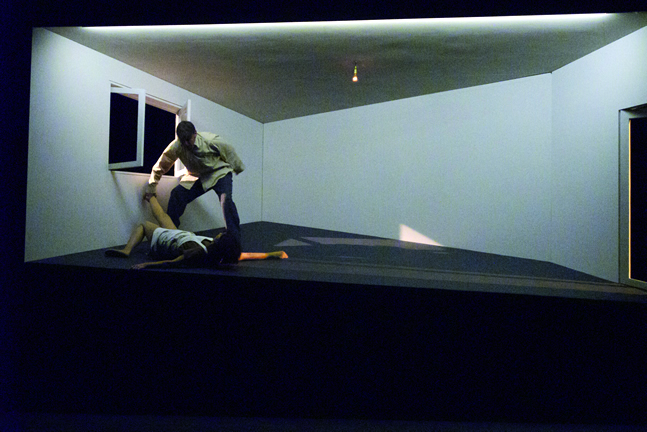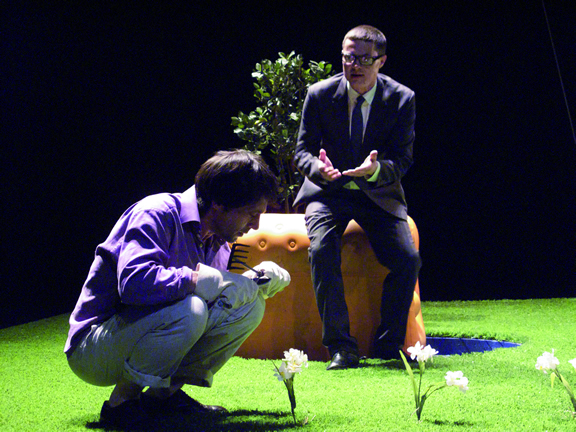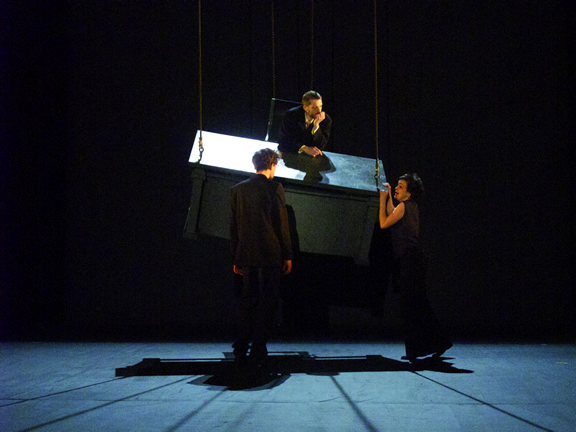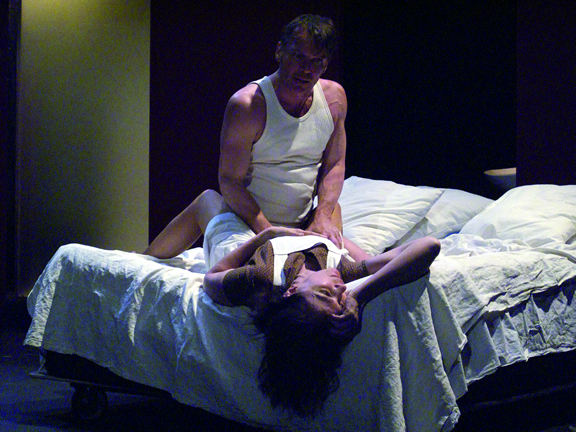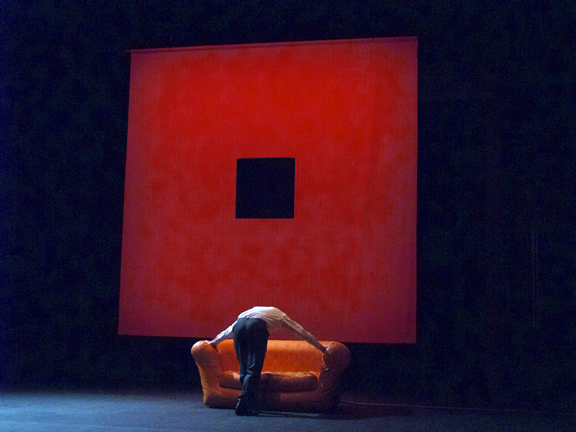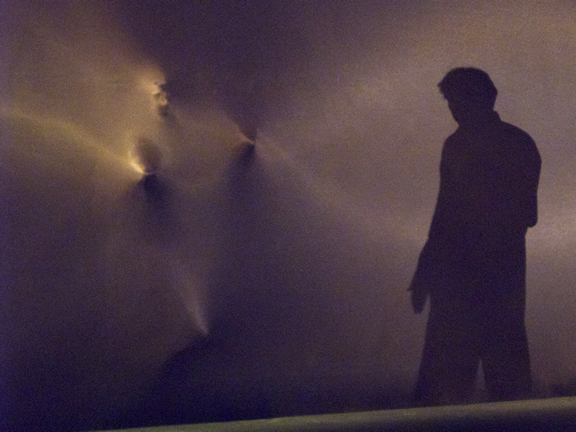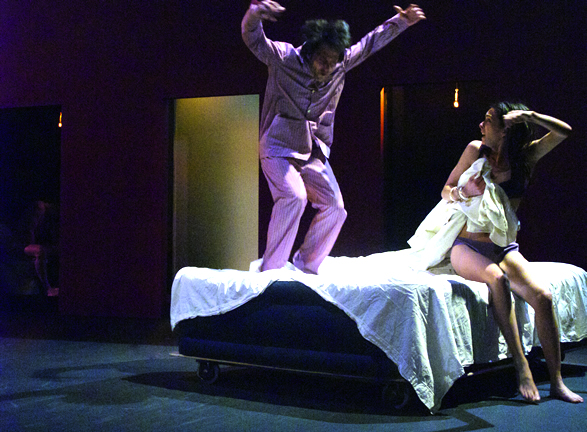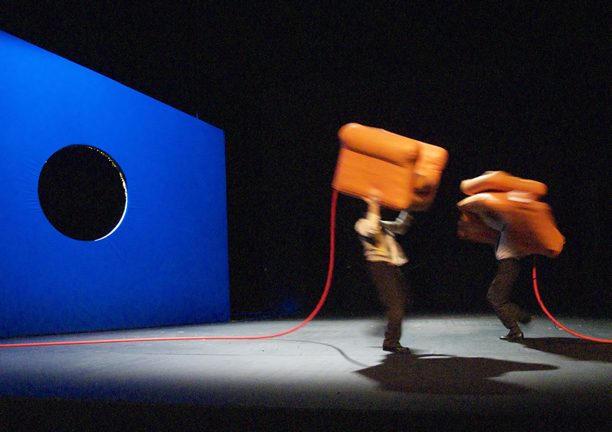That which already exists is not enough for us. That is our mistake, but it was inevitable.
Dimítris Dimitriádis
After his splendid directing of Howard Barker's Gertrude, Giorgio Barberio Corsetti meets up once again with Anne Alvaro, Luc-Antoine Diquéro, Christophe Malot, Cécile Bournay and returns to the Odeon Theater for his creation of one of Dimitriadis' most recent works. The Circle of the Square was first titled « The Square Circle » : Dimitriadis had chosen at the time, to evoke the image of an un-representable contradiction. And yet at first reading, the text appears to be of an extreme simplicity : where then, are the paradoxes or « impossibilities » hiding in these simple, comprehensible scenes ? The deepest labyrinths are those that hide their thresholds, their limits. The characters, who live on the threshold, are simply designated by colors and are split up into four groups in « a single space, open or closed, composed of four unities ». I
n each group, a sentimental crisis pursues its tragic path. Greene, the female, meets up with Green, the male, after having left him, willing now to do anything so that he will take her back ; Ciel, the man, and Cielle the woman, come to see Black to discuss the only problem they have as a couple ; Violette, the woman, tells Violet her man, that she is going to leave him for Grey, his best friend ; Yellow and Red are both in a relationship with Blue, and wonder which of the two he loves the most. Love stories, which unfold little by little.
If Dimitriadis, finally decided to talk about circles, it is perhaps as an allusion to Arthur Schnitzler's famous play, where different forms of erotic encounters are explored, from couple to couple, along a chain of love stories, taking desire through all levels of society. But where Schnitzler imagined Eros moving between bodies, characters that were close to each other, Dimitriadis confines Eros into air-tight boxes, to the point of obsession : the members of one group will never meet those of another group. The dynamics of a circle therefore, are not those of some sort of joyful circulation of a force field that is continually expanding and impossible to confine, but rather that of implacable reiteration. Some kind of tragedy that might resemble a Rubik's cube : fragmented, colored surfaces keep turning around, pivoting, recomposing into a dizzying number of possible combinations - always forming the same volume. But the difference between a Rubik's cube and Dimitriadis's square, is that there is no solution to the latter, and it is more akin to a figure of « eternal recurrence. » Because, according to the Greek poet, a work must continue after it is over, and the Circle of the Square gives its director, the dramatic formula necessary in order to do away with all limits. How then, can it be shown ? Corsetti, with his innate sense of form and his taste for contemporary writing, has accepted to take up this enigmatic challenge.
Cast
by Dimítris Dimitriádis
directed by Giorgio Barberio Corsetti
May 14th - June 12th, 2010
Théâtre de l'Odéon 6e
French translation : Claudine Galéa with Dimitra Kondylaki
direction assistant : Raquel Silva
set & costumes : Cristian Taraborrelli
lights : Jaufré Thumerel
sound : Jean-Philippe François
music : Gianfranco Tedeschi
photograph : Alain Fonteray
with Julien Allouf, Anne Alvaro, Bruno Boulzaguet, Cécile Bournay, Luc-Antoine Diquéro, Maud Le Grevellec, Christophe Maltot, Laurent Pigeonnat
Length : 2 hours 35 minutes
production Odéon-Théâtre de l'Europe
avec le soutien de l'Atelier Européen de la Traduction/Scène nationale d'Orléans et de la Maison Antoine Vitez
,


